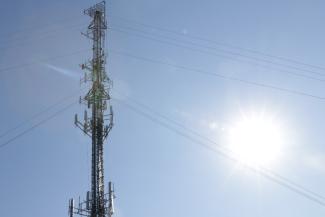Understanding Data Usage
How much do you really need?
In today's digital age, data has become an integral part of our lives. From streaming videos and music to browsing social media and sending emails, we rely heavily on data to stay connected and access information. However, as data plans and internet services continue to evolve, it's important to understand how much data you really need to avoid paying overage fees or for data you aren’t using. So how do you know what amount of data is right for you? There are a few different factors that affect your data usage and will help you decide what the right amount is.
Assessing Your Usage Patterns:
The first step in understanding your data needs is to look at your usage patterns. When you think about it, determine what you are most often using your data and internet on your phone for. How often do you stream videos or music? Do you frequently download large files or stream high-definition content? Understanding your typical online behavior will help guide you in the right direction.
Quantifying Data Consumption:
Once you have a better idea of your usage patterns, it's important to quantify how much data various activities consume. Here's a general guideline to help you estimate data usage for common online activities:
Browsing the web, checking emails, and using social media: These activities typically consume a relatively small amount of data, ranging from a few kilobytes to a few megabytes per session. If this is your primary data usage, a lower data plan, like our Smart Data plans, might be the best fit for you.
Streaming music: On average, streaming music consumes around 1-2 megabytes per minute. However, higher-quality audio streaming services might use more data, so be mindful of your preferred streaming settings. If you’re listening to a lot of music or podcasts, you’ll likely want a plan that has a bit more data. If you’re an avid listener, our Standard Unlimited Plus plan might be a good fit. However, if you casually listen and only need a single line, our Single Unlimited plan might work better.
Streaming videos: Video streaming consumes a significant amount of data. Standard definition (SD) streaming can use around 1-2 gigabytes per hour, while high-definition (HD) streaming can consume up to 3-4 gigabytes per hour. Ultra-high-definition (4K) streaming can require 7-10 gigabytes per hour. If you’re spending a lot of time watching videos on your phone, the Select Unlimited Plus plan will help ensure you don’t run out of data and lose video quality.
Online gaming: Online gaming can vary greatly in data consumption. Most online games use a few kilobytes per second for gameplay, but large game updates or patches can consume several gigabytes. Depending on what type of gaming you like to do, your plan choices could range from our Single Unlimited plan all the way up to our Select Unlimited Plus plan.
Optimizing Data Usage:
Understanding your data usage allows you to make informed decisions on how to best optimize it. Consider the following tips to ensure you're not using more data than necessary.
Connect to Wi-Fi: Whenever possible, connect to a Wi-Fi network to save your data. This is especially important when streaming videos or downloading large files. However, while most wi-fi networks are safe and secure, always be aware of what network you are joining. Many places of business will have their safe network and password advertised, or if you are in someone's home you can ask what their network is to ensure you are joining one you can fully trust.
Adjust video streaming settings: Many streaming platforms allow you to adjust the video quality to reduce data usage. Opting for a lower resolution can significantly reduce data consumption. The video might not be as crisp and clear, but if you’re not connected to wi-fi, lowering video quality will ensure you aren’t using a lot of data in a short period of time.
Manage app background data: Some apps consume data in the background, even when you're not actively using them. Review your phone’s settings and disable background data usage for apps that are not essential. (Follow up blog post on how to do this – internal linking)
Utilize data-saving features: Many phones and apps offer data-saving features that compress data or restrict background data usage. Enable these features to make the most of your data plan.
Monitoring and Managing Data Usage:
To avoid unexpected overages or running out of data, make sure you are continuously monitoring and managing your data usage. Most smartphones provide built-in tools to track your data consumption. Additionally, many mobile service providers offer apps or online portals where you can monitor your data usage in real-time, Cellcom included! Set up data usage alerts or notifications to know if you are getting close to your data limit.


